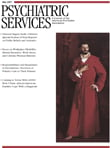The Mother-Daughter Project: How Mothers and Daughters Can Band Together, Beat the Odds, and Thrive Through Adolescence
Ten years ago the authors, a psychiatrist and a therapist, who both had seven-year-old daughters, joined with other women in their Western Massachusetts community to develop "a plan that would enable our girls to thrive through adolescence, and that would enable us to remain close and connected to them." The result was a mothers' group and a mother-daughter group that continued for ten years, as the girls and their mothers successfully negotiated adolescence. The purpose of this book is to share the experiences and the lessons of the Mother-Daughter Project with other mothers of young girls so they can apply them in their own lives.
The first section of the book explores the forces in our society that make being an adolescent girl, and being the mother of an adolescent girl, difficult and that encourage separation between mother and daughter. Drawing on the work of Carol Gilligan and others, this section presents an alternative vision, one of individuation and connection that allows the daughter to develop autonomy while maintaining intimacy. Part 2 is organized by the chronology of preadolescence and adolescence, with each chapter exploring the specific developmental tasks and challenges of one year in a girl's life and offering specific suggestions and tools for addressing these challenges.
The project is based on the belief that mothers and daughters together can fight the social forces that could separate and weaken them. But this work is too hard to do on one's own; it requires a community of like-minded women and their daughters. The authors created such a community in the project, and they advise readers to start their own group, or at least to join with even one other woman and daughter to support their efforts.
This model is based on intergenerational reciprocity: mothers thrive if daughters thrive, and vice versa. Over and over in the book, mothers are asked to do their own work, clarifying their experiences, values, and beliefs before raising an issue with their daughters. Often this preliminary work involves looking at their relationship with their own mothers, so the model becomes three-generational.
The approach is normative; stresses and difficulties between mothers and adolescent daughters are seen as a common, natural part of normal development. They need to be addressed but not as deficits or as pathology. They are dealt with proactively and preventively; by using an understanding of normal development, issues are predicted and addressed before they become problems.
The absence of fathers is notable in this model. In the culture of the Mother-Daughter Project, the primary affiliation group is not the nuclear or even extended family but rather a community defined by gender. Girls become part of the community of women, and this is where they find their strength.
Although leaving out fathers presents an incomplete view of the world of the adolescent girl and her family, it does not detract from the stated goals of the authors. They want to help young girls—and their mothers—navigate the currents and shoals of adolescence while maintaining closeness and drawing strength from each other and from a community of women and girls, and they have accomplished that. They offer an overall vision and a multitude of specific tools to help accomplish that vision. They are very successful in achieving what they set out to do.



